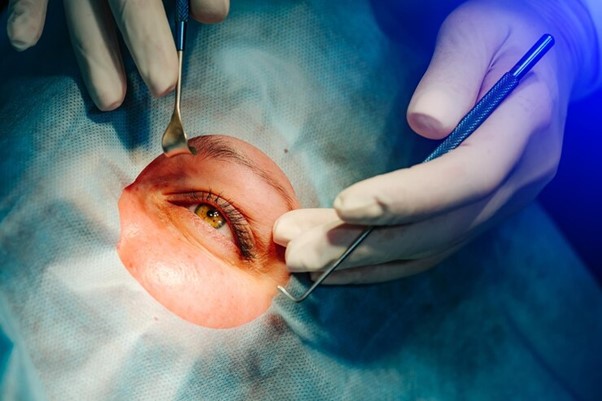The Core of Oculoplasty: Procedures and Applications
culoplasty procedures are special surgeries that help with the area around your eyes and face. This not only includes eyelids but also tear ducts, cheeks, and other parts of the face. Occuloplasty can be split into two types: functional and aesthetic. Functional surgeries help if your eyelids are droopy or if you have trouble with tears. Aesthetic procedures improve your appearance by addressing wrinkles or under-eye bags. So, whether it’s about seeing clearly or looking your best, these occuloplasty treatments cover a lot of ground.
Identifying Candidates: Who Needs Oculoplasty Surgery?
You might need occuloplasty surgery if you have problems like droopy eyelids, also known as ptosis, or issues with your tear ducts. Sometimes, these are things you’re born with, or they appear as you get older. Occular plastic surgeries handle both medical and looks concerns.
- Genetic issues can cause eyelids to droop from birth.
- Aging might lead to extra skin or block the tear ducts.
Through occuloplasty, these problems can be fixed. This improves your health and boosts self-confidence. So whether it’s for smoother skin or clearer sight, occuloplasty procedures cater to various needs, helping many lead better lives.
Inside an Oculoplasty Procedure: What to Expect?
Before going for occluplasty, you’ll talk with your doctor. They’ll explain what to expect and how to get ready. The actual occuloplasty surgery might include steps like:
- Preparation: The doctors will prepare the area around your eyes.
- Surgery: Depending on the need, they might lift your eyelids or fix tear ducts.
- Immediate Aftercare: After the occuloplasty procedure, you may need some time for recovery in the clinic.
Recovery is crucial. It could take a few weeks to heal fully after occuloplasty treatments. Following advice for aftercare is vital. Rest and regular check-ups help you heal well. Ask your specialist any questions you may have to understand your aftercare. It might seem long, but proper recovery ensures you get the best results from your occular plastic surgery.
Debunking Myths and Misconceptions of Oculoplasty
Many myths surround occuloplasty. Let’s clear those up:
- Myth: It’s only for the old or those seeking beauty.
- Truth: It helps all ages with functional needs too.
Hearing from people happy with their occuloplasty procedures reveals its success. Patients often share experiences of clearer vision or better eye health. Thanks to technology, these occuloplasty treatments are safer and more effective now. So forget the myths—occular plastic surgeries offer real solutions to real problems.
Finding the Right Specialist and Ensuring Post-Surgery Success
Choosing a good occuloplastic surgeon is vital. Here’s how to find the best:
- Check qualifications: Ensure the specialist is certified for occuloplasty treatments.
- Read reviews: Look at patient testimonials and success stories.
- Ask questions: Discuss your case and understand the occluplasty options available.
After surgery, follow-ups matter. They help with smooth recovery and ensure no complications arise. Taking care of yourself after a occuloplasty procedure means attending these follow-ups.
Aftercare should include:
- Rest: Follow rest guidelines precisely.
- Medication: Use prescribed medicine and ointments.
- Regular Check-Ups: Keep all follow-up appointments.
Hearing about people transforming their lives through occuloplasty is inspiring. Can you imagine the joy of seeing better or looking younger? These are the changes many experience. With the right team and care, your occular plastic journey can be just as successful.
In the end, occuloplasty isn’t just about medical necessity or beauty. It’s about improving your quality of life, making day-to-day activities easier, whether it’s reading a book or feeling free to smile in photos. Choosing to pursue occuloplasty surgery can be a step towards a brighter, clearer future.

